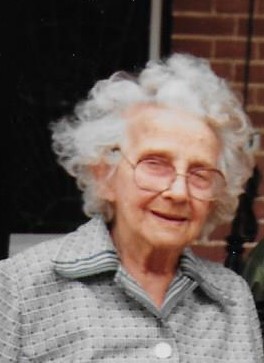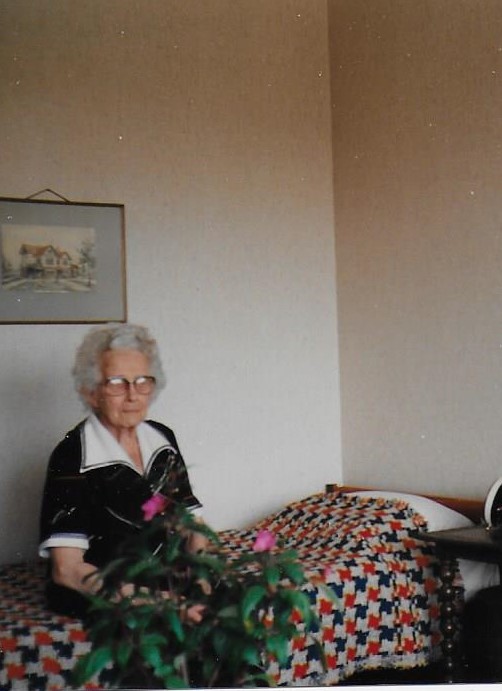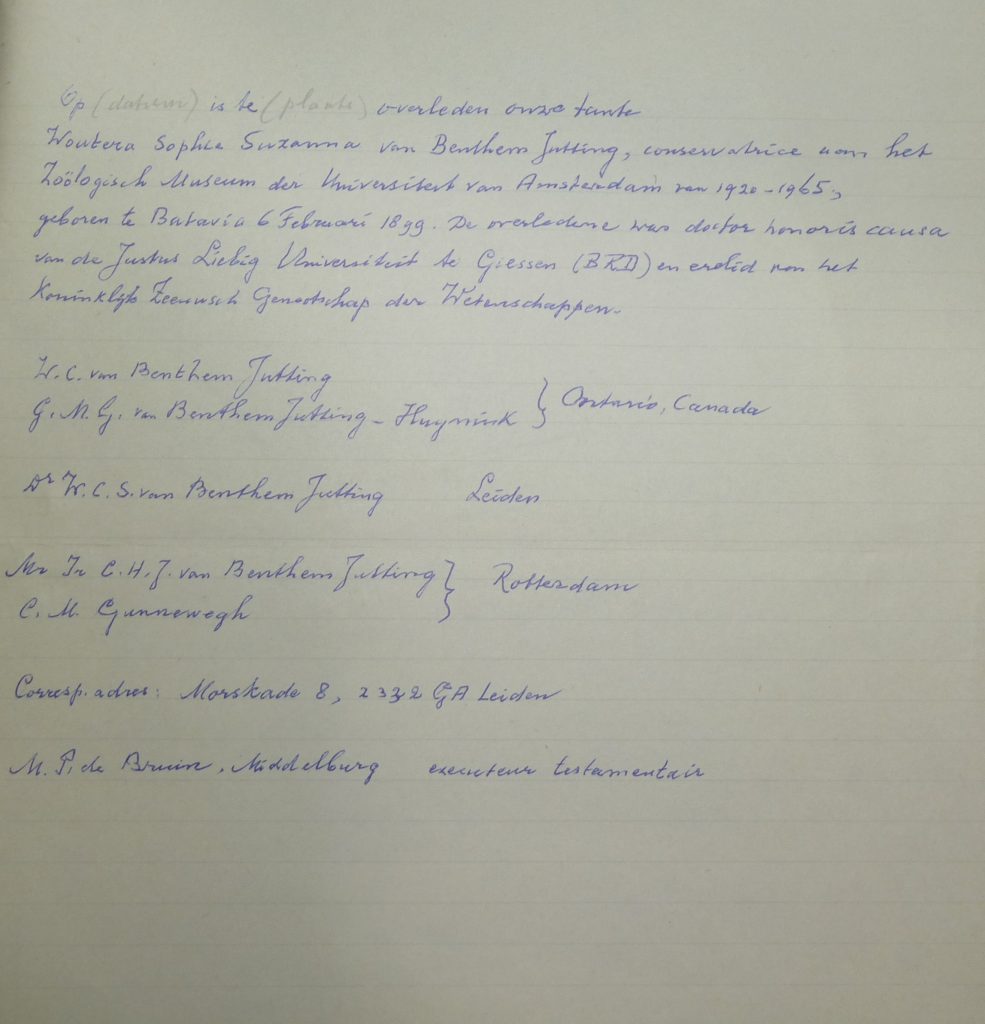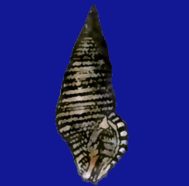
The previous blog was an In memoriam for Pico who dies in August 1987.
Here on the left Tera on a photo, early 1988, in front of the Wael.
After Pico’s death, Tera decides, probably in consultation with Rinus de Bruijn, whom she has already appointed as executor of her will, and her niece Mien van Benthem Jutting, to sell De Wael and auction almost the entire contents. That is quite a job; Pico kept everything and in the village the story goes that he kept all his mother’s household books, so that you could now see how much a roll of biscuits would have cost in 1900.
“It is unbelievable what has emerged from every nook and cranny in the house in Domburg, ecause Pico kept everything. It were busy and exhausting months,” Tera writes six months later. Tera donates a large part of her malacological library to the Zoological Museum, donations are also made to the Zeeuws Archief, to the Institute for the Tropics, to the National Service for Soil Research and to the Zeeland Library. Because of all those different archives, it was sometimes difficult for me, as her self-appointed biographer, to get the right background information.
The furniture, paintings, silver and other items are auctioned. At the auction, Tera sits in the front row watching what it will bring, quit stoic and untouched according to some people who were there. The house and land that Labruyere rented are donated to him by bequest. The house with garden is sold, in the village the story goes that she sold it below the price, because she didn’t want to sell it to Germans.
In July 1988, Tera moves into a room in the Roggeveenhuis, a care home in Middelburg; spartan furnished with a bed, a table with two chairs and a bookcase. She writes resignedly: it will take some getting used to, without Pico, without Domburg, without the garden.

When her friend Hans Kuiper, with whom she has corresponded for over fifty years, visits her there, he writes: I visited her there for the first time, I must confess, with a heavy heart. Was this really the only alternative after De Wael? A bed-sit on the sixth floor with a serving hatch for meals. But Tera turned out to be content with her small home, especially since she now had difficulty walking. She only wanted to see the positive side of the move. “In Domburg there was so much green that you could hardly see the sky. Here you see beautiful skies with ever-changing clouds.” Sitting at the table in front of the window, she enjoyed the view over Walcheren with Veere in the distance. She filled the time with reading books, including about the East Indies of the past.
Tera turns ninety on February 6, 1989. That is celebrated in a big way; Rinus de Bruijn takes care of the organization, in the abbey of Middelburg, where the provincial executive is located and where Pico once had plans to house the Zeeuws Museum. Both the family and the scientific staff of the Zoological Museum are present.

Pictured above Tera with her cousin Bert van Benthem Jutting (my father) on her 90th birthday.
Tera receives the “Natura Peperit Scientiam” medallion from the director of the Zoological museum, or “Nature gives birth to Science”. On that day, both the Provinciale Zeeuwse Courant and the Telegraaf pay attention to Tera as a scientist and to the award she receives. That she is still in good shape and that there is nothing wrong with her mental abilities becomes apparent when Edi Gittenberger, who was a professor in Leiden at the time, comes to the reception. He remembers: There was a reception where she sat on a chair, a small but active woman. She hadn’t published anything in years. When it was my turn to shake hands, I didn’t have to introduce myself, even though we hadn’t seen each other for many years. She immediately recognized those present, including me. Moreover, it turned out that she still kept up with the malacological literature! “Hello Edi, how are you? I saw that you recently published something in the Archiv für Molluskenkunde!
Tera praises the care and friendliness of the staff in the Roggeveenhuis. She does not seek contact with other residents because she knows that her interests lie elsewhere than those of the other residents. The last months of her life she falls ill and life becomes more difficult for her. She seems to be growing towards the end. When her niece Mien comes by in July 1990, Tera gives her the text for her mourning card, with dots in place of the date. She giggles and says: of course I couldn’t fill it in yet. Below is the note in question, in Tera own handwriting.

That date comes on January 22, 1991 when she dies in the hospital of Middelburg, almost ninety-two years old.
In the following blogs we will look back on Tera’s life and work.
